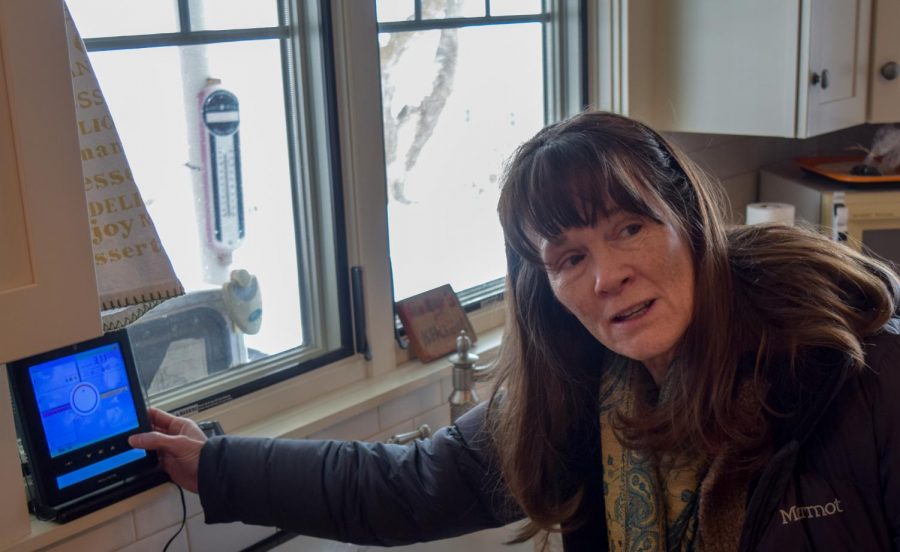Volunteers help predict weather
Over 1,000 spotters collect, compile data for Inland NW weather predictions
MICHAEL LINDER | The Daily Evergreen
Shelley Chambers-Fox, a weather spotter working in Albion, explains how she uses a wireless weather station to track weather, temperature and wind changes in the area.
February 28, 2018
A see-through yellow gauge attached to a wooden fence captures rain so Shelley Chambers-Fox can measure it and add it to her data collection. On the other side of her property, another collector beside an old wooden shed electronically measures rainfall, air temperature, wind speed and wind direction.
Seven and a half miles north of Pullman is Albion, a small town situated between the Palouse hills. Natural springs surround Chambers-Fox’s white house, which blends into the snowy hillside, and the Palouse River roars as it flows along the other side of the road. These sources of water piqued her interest, inspiring her to start collecting weather information and become a spotter for the National Weather Service.
“It gives me a purpose for the things I’m interested in,” Chambers- Fox said.
The Inland Northwest has over 1,000 weather spotters scattered throughout the greater Palouse area who volunteer their time to provide vital information about hazardous weather conditions to the NWS.
“Weather spotters provide ground truth to meteorologists who are making warning decisions,” said Andrew Brown, warning coordination meteorologist at the NWS’s Spokane office.
Weather spotters report severe weather, such as strong winds, hail or heavy rain. NWS has tools to gather weather data and help with the warning process, Brown said, but these tools have limitations.
“It’s critical to have weather spotters to help fill in the gaps,” he said.
Using information provided by weather spotters about developing conditions, meteorologists can make informed decisions about where weather systems are heading and how intense they will become.
Once these decisions are made, a weather warning will go into effect and be relayed through the Federal Emergency Management Agency’s Integrated Public Alert & Warning System.
“With this information,” Brown said, “people in harm’s way are more likely to take action to protect themselves.”
Chambers-Fox started noticing how the weather in Albion was different from what the weather stations claimed in Pullman.
“Our weather is never quite the same as Pullman, always a little colder and warmer,” said Chambers-Fox, a former WSU College of Pharmacy instructor.
Predicted weather on the Palouse does not always match up with what actually occurs. James Durfey, an agriculture professor at WSU, said that happens because the area’s rolling hills create “micro-environments.”
Durfey is a weather spotter for the Pullman area. When he’s not teaching or in meetings, he’s flying planes, which inspired him to take on this second job. Knowing the weather is important for flying, he said, because it can change from area to area.
The weather significantly affects farmers on a day-to-day basis. Durfey is a crop adjuster and watches the weather to tell how a potential storm could impact farms.
He envisions farmers will be equipped with technology in the future to collect weather data themselves. He hopes to see tractors with devices that can record wind speed and temperatures, just as he does. This will allow farmers to know the weather patterns of their own micro-environments.
The NWS of Spokane offers trainings twice a year in cities throughout the Inland Northwest, and an online class for those who cannot make the in-person course.









